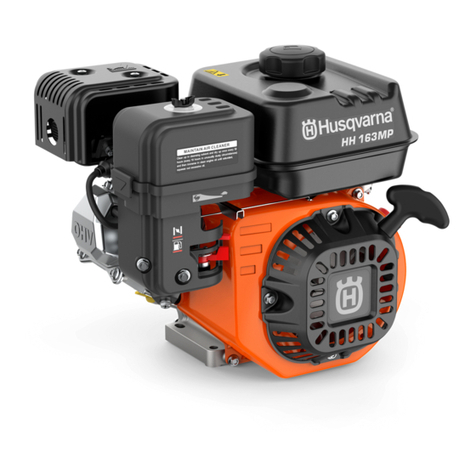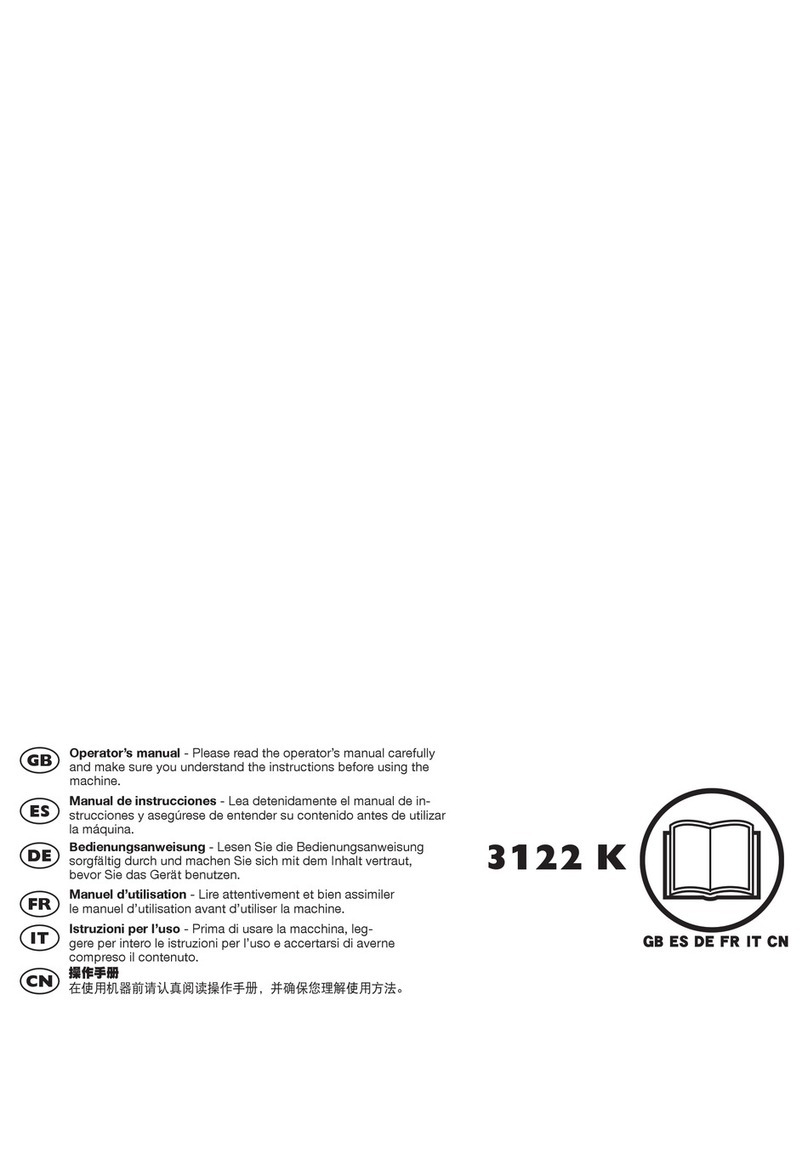
• You must read and understand the operator’s
manual for the product that uses this engine.
There can be more safety instructions for start,
stop, operation and maintenance.
• Save all warnings and instructions.
• Do not let a person operate the engine unless
they read and understand the contents of the
operator's manual.
• Do not let a child operate the engine.
• Do not do modifications to the engine.
Safety instructions for operation
WARNING: Read the warning
instructions that follow before you use
the engine.
• Make sure that you know how to stop the engine
quickly in an emergency.
• The exhaust fumes from the engine contain
carbon monoxide which is an odorless,
poisonous and very dangerous gas.
• Do not use a combustion engine product indoors
or in areas that do not have sufficient airflow.
• Do not use the engine in areas where fire or
explosions can occur.
• If you obey all instructions for operation and
troubleshooting and the engine does not start,
speak to a Husqvarna servicing dealer. Do not
try other methods to start the engine.
• Do not use starting fluid.
• Do not spray flammable gases into the
carburetor or onto the air cleaner.
• Do not put flammable liquids into the
carburetor or onto the air cleaner.
• Do not start the engine with the spark plugs
removed. Fuel can spray from the spark plug
hole and cause a fire.
Safety devices on the product
WARNING: Read the warning
instructions that follow before you use
the product.
• Do not use a product with defective safety
devices.
• Do a check of the safety devices regularly. If
the safety devices are defective, speak to your
Husqvarna service agent.
• Do not make modifications to safety devices.
Muffler
The muffler keeps the noise levels to a minimum and
sends the exhaust fumes away from the operator.
Do not use the product if the muffler is missing or
defective. A defective muffler increases the noise
level and the risk of fire.
WARNING: The muffler becomes
very hot during and after use and when
the engine operates at idle speed. Be
careful near flammable materials and/or
fumes to prevent fire.
To do a check of the muffler
• Examine the muffler regularly to make sure that it
is attached correctly and not damaged.
Fuel safety
WARNING: Read the warning
instructions that follow before you use
the product.
• Fuel is flammable and the fumes are explosive.
Be careful with fuel to prevent injury, fire and
explosion.
• Do not breathe in the fuel fumes. The fuel fumes
are poisonous and can cause injury. Make sure
that the airflow is sufficient.
• Do not remove the fuel tank cap or fill the fuel
tank when the engine is on.
• Make sure that the engine is cool before you
refuel.
• Do not fill fuel in an indoor area. Insufficient
airflow can cause injury or death because of
asphyxiation or carbon monoxide poisoning.
• Do not smoke near the fuel or the engine.
• Do not put hot objects near the fuel or the
engine.
• Do not fill fuel near sparks or flames.
• Before you refuel, open the fuel tank cap slowly
and release the pressure carefully.
• Fuel on your skin can cause injury. If you get fuel
on your skin, use soap and water to remove the
fuel.
• If you spill fuel on your clothing, change clothing
immediately.
• Do not fill the fuel tank fully. Heat causes the fuel
to expand. Keep a space at the top of the fuel
tank.
• Tighten the fuel tank cap fully. If the fuel tank cap
is not tightened, there is a risk of fire.
• Before you start the product, move the product to
a minimum of 3 m/10 ft from where you refueled.
• Do not start the product if there is fuel or engine
oil on the product. Remove the unwanted fuel
and engine oil and let the product dry before you
start the engine.
• Examine the engine for leaks regularly. If there
are leaks in the fuel system, do not start the
engine until the leaks are repaired.
• Do not use your fingers to examine the engine
for leaks.
• Keep fuel in approved containers only.
41974 - 001 - 09.12.2022



































